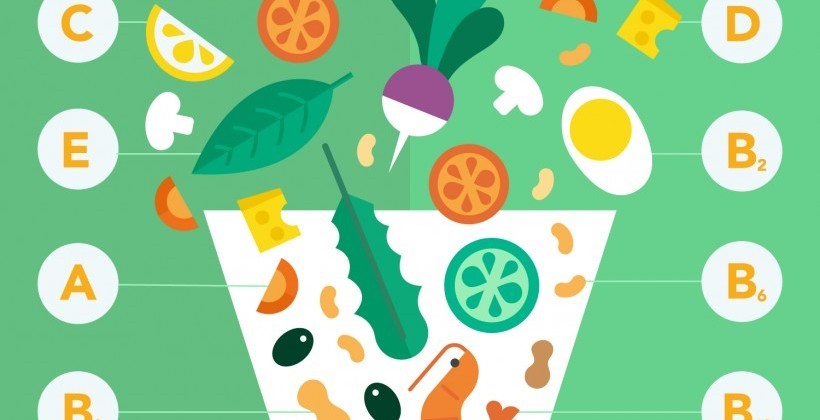A well-balanced diet includes a variety of foods from the five food groups (protein, fruit, vegetable, grain, dairy). But just as important as the foods themselves is what they are made up of.
Food is full of micro-nutrients (vitamins and minerals), and when we don’t eat enough variety, we put ourselves at risk for deficiency. The micro-nutrient intake of Americans is studied at length using the National Health and Nutrition Examination Survey, and data has shown that many Americans don’t meet the daily recommended intakes of the five micro-nutrients below.
Calcium
The most abundant mineral in the body, calcium, makes up our bones and teeth. Cells require calcium for normal functioning. But even if you’re not getting enough, you probably won’t feel it because your body will maintain its needed calcium levels by pulling it from the bones when there isn’t enough in the diet! Over time, this can cause low bone density, which can cause fractures and possibly osteoporosis.
Dairy is the easiest way to boost calcium intake, but if you’re dairy-free, you can benefit from other natural calcium sources like bok choy, okra, and leafy greens like this Sauteed Red Swiss Chard.
Vitamin D
Also a major player in bone health, vitamin D helps bones absorb calcium and phosphorus. Your skin produces vitamin D when exposed to sunlight, but its ability to do that depends on age, skin color, and where you live. In Boston, because we are so far north, the sun isn’t strong enough (and we are wearing layers of warm clothes!) during the winter, so our skin can’t make as much as we need.
Obtaining vitamin D from diet is the only guaranteed way to get enough. Fish and egg yolks are both good sources; vitamin-enriched dairy, sunflower seeds and mushrooms also contain this vitamin. Elegant Chicken Marsala is a one pot dish perfect for winter days.
Vitamin A
Essential for vision, building skin cells, and immune system function, symptoms of vitamin A deficiency include night blindness and dry skin.
Red and orange fruits and vegetables all contain vitamin A, and this Pork, Peppers and Pasta dish has 37% of the daily vitamin A recommendation.
Potassium
The kidneys, heart, and other organs depend on potassium for their normal function. It plays a major role in muscle building and maintaining the body’s acid-base balance (also called blood pH). Deficiency symptoms include muscle cramps, weakness, nausea, and low blood pressure.
Bananas, citrus fruits, potatoes, and avocados are all good sources of potassium. You can get some from whole grains, too, like in this Banana Bran Bar recipe.
Iron
Human bodies need iron to make the oxygen-carrying protein in red blood cells called hemoglobin. This protein is responsible for moving oxygen from the lungs to all tissues via the bloodstream. Symptoms of iron deficiency include weakness, dizziness, and fatigue. Younger children with the deficiency may be restless or unable to pay attention.
Animal muscle is a great source of iron, but spinach, beans, and molasses are good vegetarian options. Try this Jicama Black Bean Salad that contains both beans and spinach (and add a cup of corn to make the meal a complete protein).
Written by Adriene Worthington, RDN, LDN
#minerals, #vitamins

